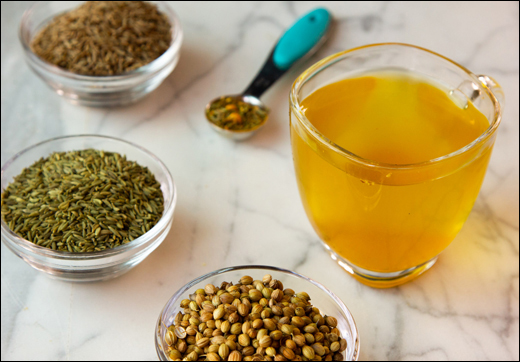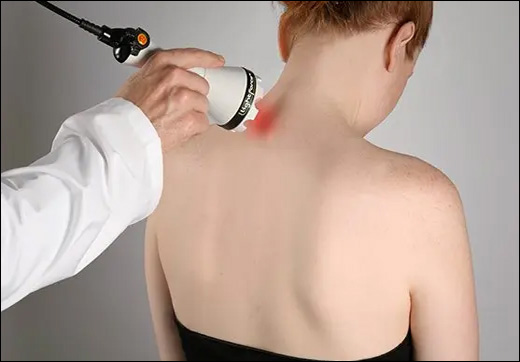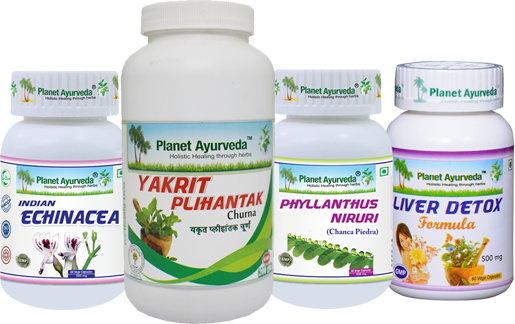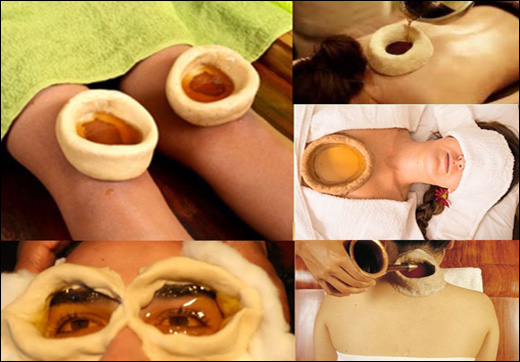Abstract
Changeri botanical name is Oxalis corniculata with Oxalidaceae family also known as Changeri Kula. Changeri is explained in Shaak Varg of dravyas. As the name suggests changeri means Rochana. It is explained in the old age content of Ayurveda. It has a sour taste and is used in various disorders of the body. Leaf, fruit, or whole fruit of changeri should be used. As it is rich in potassium, oxalic acid, and vitamins B and C it is very effective in liver and stomach problems. The herb is rich in protein, fat, water, iron, calcium, niacin, beta-carotene, and phosphorus. It has major constituents like vitamin C and oxalic acid and other chemical compounds such as phenol, fatty acids, flavonoids, phytosterols, and tannins.
Introduction
Changeri is explained in different parts of Samhita. Changeri is Sour and Astringent in Taste, Light, and Dry in nature, hot in potency, sour in the metabolic property after digestion, balances the vata and kapha dosha, and acts as a Deepaniya and Ruchya in the body. It acts as an appetiser and improves the digestive fire and metabolism of the body. It helps to treat the vata and kapha disorders of the body such as in Grahani, Arsha (Hemorrhoids), and Atisar (Diarrhoea) as leaves are bitter and astringent in taste. The flower has self-pollinating properties which help to grow it fast. It acts as an Analgesic, Anti-inflammatory, Antiulcer, Antifungal, Antimicrobial, Antinociceptive, Anti-cancer, Anti-diabetic, Anticonvulsant, Hypolipidemic, wound healing, Hepatoprotective, Antihelminthic, Febrifuge, Stomachic, Astringent, and Relaxant properties.
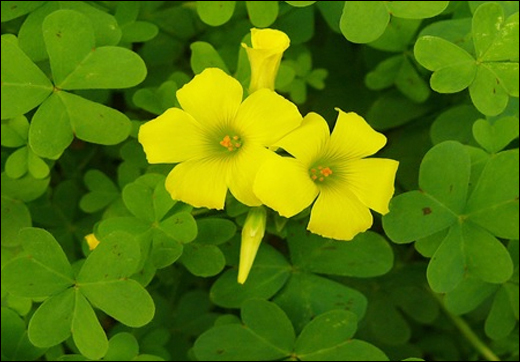
Geographical Distribution Of Oxalis Corniculata (Changeri)
It is a delicate and slow-growing herb that grows in warm parts and in all temperate and tropical climates and grows up to an elevation of 3000 metres in the northwest Himalayas. It is found in the tropical regions of America, India, China, Taiwan, Pakistan, Afghanistan, and Indonesia, and in India it is mostly present in mountains, rivers, open gardens, roadsides, riversides, wastelands, and grasslands.
Morphology Of Oxalis Corniculata (Changeri)
It forms lata (bael) on the ground and gives rise to a new plant.It contains the creeping perennial herb which contains alternate, trifoliate with long petiole and has yellow flowered. Fruits are in the form of capsules with many black seeds present in it. It contains a yellow flower and the entire plant is edible and rich in vitamin C. Flowering is present from July to December of the month. Changeri plant is branched and fibrous covered with tiny hairs.
How To Identify A Changeri (Oxalis Corniculata)
- Leaves - Leaves are alternate and trifoliate in nature and it is broadly obcordate (heart-shaped is attached to the stalk at a pointed end), base cuneate (leave base that has a narrow and wedge-shaped with straight sides that taper to the base), and petioles (it is a stalk that attaches a leaf to the stem of the plant) are 1.5 to 3 cm long.
- Fruit - Fruit is in the form of a capsule which is linear and puberulous outside.
- Seeds - Seeds are many, minute in size and brown in colour.
- Flower - The flower is bisexual and contains 10 stamina and it is solitary or in axillary umbels in size. Flowers are usually yellow in colour. Pedicles are 0.5 to 1 cm Peduncles are 4 to 10 cm long, and bracts are 3-4 mm long and have linear-lanceolate.
Different Names Of Oxalis Corniculata (Changeri) According To Languages
- Hindi Name - Teen Pattia (As three leaves structure is there)
- Tamil Name - Paliakiri
- English Name - Indian Sorrel, Yellow Wood sorrel
- Bengali Name - Amrul
- Arabic Name - Hamdi
- Urdu Name - Teen Pattia
- Gujarati Name - Ambolee
- French Name - Oxalis cornicluee
- Telugu Name - Pulichinta
- Marathi Name - Ambutee
- Kannada Name - Sivargee, Pullamouradi
- Spanish Name - Vinagrera, Acederilla
- Sweden's Name - Krpoxalis
- Portuguese Name - Erva-azedo, Azedinha
- Italian Name - Ossalide corniculata
- Fiji's Name - Matakonikoni
- German Name - Gehornter sauerklee
- Nepalese Name - Caremalaa
- Chinese Name - Cu-jinag-cao
- Brazil Name - Trevo-azedo
- Turkish Name - Eksi yonca
- Philippines Name - Kanapa, Salamagi
Synonyms Of Oxalis Corniculata (Changeri)
- Teen Patiya - As three leaves structure is there
- Amal Patrika - As leaves are sour in taste
- Dantasatha - It produces a tingling sensation in the teeth
- Sunishannachada - As leaves resemble the Sunishannaka
- Lonika
Rasa, Guna, Virya, And Vipaka Of Oxalis Corniculata (Changeri)
- Rasa (Taste) - Amla (Sour), Ksahaya (Astringent)
- Guna (Physical property) - Laghu (Light), Rooksha (Dry)
- Virya (Potency) - Ushna (Hot)
- Vipaka (Metabolic property after digestion) - Amla (Sour)
- Prabhava (Effect) - Deepaniya, Ruchya, and Atisarahara
- Dosha - Vata and Kapha Dosha
- Other - Analgesic, Anti-inflammatory, Antipyretics, anti-bacterial
Changeri (Oxalis Corniculata) Relation With Doshas
As it is sour and astringent in taste it helps to pacify the vata and kapha dosha of the body.
Mode Of Propagation And How To Cultivate Changeri (Oxalis Corniculata)
Mode of propagation will be through seeds. It can be grown in a shady area and cultivated by seed and roots along with the stem and it can be available throughout the year.
Kingdom Classification Of Oxalis Corniculata (Changeri)
- Kingdom - Plantae
- Order - Oxalidales
- Class - Oxalidaceae
- Botanical Name - Oxalis corniculata
- Rank - Kingdom
- Genus - Oxalis
- Species - O. corniculata
- Botanical Name - Oxalis corniculata Linn.
- Higher Classification - Archaeplastida (Large and diverse group of photosynthetic organisms such as land plants)
- Eaten by - Silvisaurus (who eats plants)
- Clade - Diaphoretickes (a large group of eukaryotic organisms that carry photosynthetic)
- Domain - Eukaryota
Explanation Of Oxalis Corniculata (Changeri) In Different Sthana Of Samhita
- In च.सू. २।१९ explained under Pachani and Grahi Peya in Apamarga Tundleya chapter
- In च.सू. २७। ९३ explained under Shaak varga in Annapaanvidhi chapter
- In च.वि.८।१४० explained under Amal Skandha in the Rogabhishagjitiya chapter
- In च.चि. ३। २६७ explained in Agurvadi taila
- च.चि.८।१३१ explained under the diet and drink in diarrhoea and Rajayakshma in Rajayakshma chapter
- In च.चि.१४।१२२ explained under shaka paryoga in arsha roga
- In च.चि.१९।४३ explained under Changeri ghrita in Atisar chapter
दधित्थबिल्वचाङ्गेरीतक्रदाडिमसाधिता|
पाचनी ग्राहिणी, पेया सवाते पाञ्चमूलिकी||
In Pachani and Grahi Peya, there are Dadhith (Dahi), bilva (Aegle marmelos), changeri (Oxalis corniculata), Takra (Buttermilk), and Dadima (Punica granatum) help to pacify the vata dosha in the body.
दीपनी चोष्णवीर्या च ग्राहिणी कफमारुते ||
प्रशस्यतेऽम्लचाङ्गेरी ग्रहण्यर्शोहिता च सा ||
It is Deepaniya, hot potency, pacified kapha, used in grahani, arsha.
पत्राणि चाम्रातकाश्मन्तकचाङ्गेरीणां चतुर्विधानां चाम्लिकानां द्वयोश्च
कोलयोश्चामशुष्कयोर्द्वयोश्चैव शुष्काम्लिकयोर्ग्राम्यारण्ययोः
Aamrantank, Asmanthak (A type of Kanchnar), four types of Imli, two types of ber (Berries), dry aam, four types of Imli (dry, wet, Gramya, and Jangal)
चाङ्गेर्याश्चुक्रिकायाश्च दुग्धिकायाश्च कारयेत् |
खडान्दधिसरोपेतान् ससर्पिष्कान्सदाडिमान् ||
Leaves of changeri, leaves of Imli, leaves of Dhudiya take swaras or kwath all of this and cook with daal and then in Yush add the dahi, ghee, and Dhadim extract and use it as a khand. Its acts are mala Sangrahak.
त्रिवृद्दन्तीपलाशानां चाङ्गेर्याश्चित्रकस्य च |
यमके भर्जितं दद्याच्छाकं दधिसमन्वितम् ||
Leaves of white Nisoth, leaves of Danti, leaves of Palash, leaves of changeri, and leaves of chitrak are used in equal amounts, and then an equal part of ghee is in them and fried with them and mixed with curd.
चाङ्गेरीकोलदध्यम्लनागरक्षारसंयुतम् |
घृतमुत्क्वथितं पेयं गुदभ्रंशरुजापहम् ||
Ghrit, changeri extract, kwath of berries, the water of dahi, Sonth, Yavkshara, and cook it as a Ghritapaka. Stored in a clean and air-tight container and used in rectal prolapse.
Chemical Constituent Of Oxalis Corniculata (Changeri)
- Citric acid
- Tartaric acid
- Isovitexin
- Malic acid
- Flavonoids
- Tannins
- Vitexin
- Volatile oils
- Vitamins - A, C, B9
- Phenol
- Phytosterol
- Calcium, iron, proteins, phosphorus, beta-carotene, water, fat
Parts Used Of Oxalis Corniculata (Changeri)
The fruits, leaves, or whole plant should be used. The dosage is according to the part used.
Dose Of Oxalis Corniculata (Changeri)
- If juice is used - 10-20 ml
- If powder is used - 3-6 gm
Nutritional Components Of Oxalis Corniculata (Changeri)
- Calcium
- Vitamin c
- Phosphorus
- Sodium
- Potassium
- Magnesium
The Specific Action Of Changeri (Oxalis Corniculata)
- Hridya
- Daha shamaka
- Arshogna
- Grahi
- Deepana
- Pachana
- Jwaragna
Benefits Of Oxalis Corniculata (Changeri)
- Kaphahita - Use in the treatment of kapha disorders
- Kapha vata Marutghan - Use in vata and kapha disorders
- Pittakrut - Increase the pitta dosha
- Agni Deepana - Increase digestive fire (due to deepaniya in nature)
- Pachana - Helps in digestion
- Rochana - Stimulate appetite
- Ushan veerya - Hot in potency
- Kinchit kashaya - Slightly astringent in taste
- Balya - Improves muscle strength
- Varnya - Improves complexion
- Medhya - Improves intelligence
- Kanthya - Improves voice
Indication Of Oxalis Corniculata (Changeri)
- Mehahara - Treat the urinary tract disorders
- Vayasthapana - Prevents ageing
- Grahi - Absorbent in nature
- Arsha - Helps to treat piles
- Grahani - Helps to treat malabsorption syndrome
- Atisar Hanti - Helps to treat diarrhoea
- Kustha Nashani - In skin disease
- Javara - Useful in fever
- Amahara - Treats indigestion
- Kasahara - Relieves cough
- Shwasha - Relieves breathing difficulties
- Anulomana - Improve breathing
- Hikkanigrahana - Controls hiccups
- Kanthya - Relieves sore throat
- Chakushya - Treats eye problems
- Kricha - Treats painful micturition
- Shonitasthapana - Prevents bleeding
- Trutahara - Relieves excessive thirst
- Dahahara - Relieves burning sensation
- Gulmajit - Useful in abdominal tumours
- Pandu - Treats anaemia
- Raktamandala - Treats ringworm infections
- Kamala - Treat jaundice
- Krimihara - Relieves intestinal worms
Can Changeri (Oxalis Corniculata) Used As A Food
It can be used as a food the leaves are eaten. The leaves are eaten in the form of salad or in the form of cooked vegetables.
Changeri - In Classical Texts
- Kaidev nighantu in aushadhi varga
- Nighantu Adarsha in Changeriyadi varga
- Shodhal Nighantu in Amradi varga
- Bhavprakash Nighantu in Shak varga
- Madanpal Nighantu in Shak varga
Changeri Action As Per Classical Texts
- In Kaidev Nighantu - Deepan, Kapha Vata Nashak
- In Nighantu Adarsha - Kapha Vata Nashak
- In Shodhal Nighantu - Deepan and arshogan
- In Bhavprakash Nighantu - Deepan, Ruchya, Kapha Vata Nashak, grahni, kushtha, Atisar
- In Madan Pal Nighantu - It is deepan, Ruchya, Kapha Vata Nashak
Systemic Action Of Changeri On The Body
- Scraping effect on Dhatu - So given in eye disease such as inflammatory disease of sclera, Pterygium (Arma)
- Acts as an anti-inflammatory, analgesic
- Headache
- Inflammatory wounds
The Internal Action Of Changeri On The Body
1. On Digestive System
It is Digestive, appetiser and also Given in anorexia, loss of appetite.it can also be used in various diseases such as Grahani, Arsha, Diarrhoea, Rectal prolapse and also in bleeding disorder.
2. On Nervous System
Given in intoxication and helps to regain consciousness.
Acts as anti-poisonous action and used in case of datura poisoning.
4. Tapakarma
It has a cold in touch and is indicated in Chaturthaka Jawara (Quaternary type of fever), and helps to relieve the burning sensation.
5. Skin Disease
As it is rich in antioxidants it helps to eliminate the free radicals from the body and helps in skin diseases like eczema, sunburn, and bioactive compounds prevent worm infestation and also improve the healing process in the body.
6. Piles
It has hemostatic action on the body which helps to treat piles as it proves the cooling and calming effects on the affected area.
7. Insomnia
It reduces the cortisol level in the body which is a stress hormone that helps to improve the quality duration of sleep. Changeri helps to calm the mind and acts on nerve tonic which helps to strengthen the nerve.
8. Diarrhoea
It contains an antimicrobial property that helps to kill microorganisms from the intestine, eliminate toxins from the body, and reduce the frequency of stools.
9. Digestion
It acts as an appetiser. It is a carminative that helps to break down the food particles in the stomach and helps to increase the amount of digestive juice in the stomach, boosting the absorption process of nutrients through the intestines. So it is useful in digestive disorders like flatulence, heartburn, constipation, and diarrhoea.
10. Bad Breath
As leaves are a source of antiseptic and anti-microbial properties it helps to prevent infection as it prevents the growth of microbes. Just chewing some leaves of changeri helps to cure bad breath and also helps in bleeding gums, swelling in the gums, and gingivitis.
11. Anorexia
As it is a natural appetiser and deepaniya properties in it it helps to improve the appetite and increase the digestive fire which helps to improve the metabolism of the body. As the body increases the demand for food it works as a nervous tonic which helps to improve mental health.
Benefits According To Modern
- Appetising property - It acts as an appetiser and increases the digestive fire that helps to improve the metabolism of the body and leads to the healthy functioning of the body.
- Anti-fungal property - As changeri contain anti-fungal properties, they help to treat a fungal infection like Aspergillosis, tinea infection.
- Anti-allergic - As it helps to remove the aam (toxins) from the body which helps to improve metabolism and stimulate the white blood cells that help to treat the allergy.
- Antiviral - It helps to treat viral infections such as HIV, HPV, and many other.
- Immunomodulator - As changeri is rich in vitamin C it helps to improve the immune system system of the body so it is given in immunocompromised patients.
- Acts as a cardiac tonic - As it is rich in vitamin C and potassium.
Indications According To Modern
- Skin Disease - It helps to treat the viral corns, warts, and boils
- Eyes Disease - It is helpful in the early stage of cataract
- Nausea - As it helps to relieve nausea and burping symptoms
Who Cannot Take Changeri?
Oxalic acid is present in the leaves of changeri and has a sharp flavour that helps bind the supply of calcium in the body so the person who suffers from rheumatoid arthritis, gout, and hyperacidity should take precautions while taking this.
Ayurvedic Formulation Of Changeri
- Changeri ghrita - used in malabsorption syndrome, diarrhea, and bloating
- Jivantayadi ghrita - used in the early stage of cataract
- Nagaradhi ghrita
- Charngeryadi gulika
- Changeriyadi churna
- Sunshinaka changeri Ghrita
- Changeri swaras
- Changeri capsules
Planet Ayurveda Products
1. Kukutandtwak Bhasma
Home Remedies With Changeri
- In Mouth stench (Bad breath) - Wash some leaves of changeri and chew it
- In Headachen - Grind the leaves and onion (Allium cepa)and drink it
- In Migraine - Roast the changeri leaves in ghee (clarified butter) and mix with curd (a fermented milk product)
- In Insanity - Mix changeri leaves juice with sour gruel (made up from the fermentation of rice) and jaggery powder (unrefined sugar made up from sugarcane)
- In Skin disorders - Such as inflammation, boils, burns, warts, insect bites- drink the juice of leaf extract
- In Diarrhoea - As it contains anti-diarrheal properties it helps to remove the microbes from the intestine and helps to cure symptoms
- In Stomach ache - Use the extract of leaves as it contains analgesic properties
- In Datura visha - Has anti-poisonous activity it helps to cure datura (Datura stramonium) metal poisoning
- In inflammation - Make a paste of changeri Oxalis corniculata) leaves and apply it externally on the affected area
- In Arsha (Hemorrhoids) - Use changeri (Oxalis corniculata) paste with rice gruel (boiling the rice with water or milk) and jaggery (unrefined sugar made up from sugarcane)
- In Hypoglycemia - Use the extract of changeri leaves with Haridra (Curcuma longa) and Amalaki (Emblica officinalis) which helps to balance the sugar level in the body
- In Fever -Make the decoction of changeri (Oxalis corniculata) leaves and drink it it helps to cure the symptoms of fever
- In Bacterial infection - Drink the extract of changeri leaves along with the Haridra (Curcuma longa) as it has antibacterial properties. Juice should be taken internally for two weeks. It helps to reduce the symptoms of bacterial infection.
- In Duodenum or irritable bowel syndrome - Cook the Pippalyadi gana, curd, extract of changeri leaves, and ghee. Another method is to use changeri Ghrita with Takra.
- In Diarrhoea - Drinking the extract of changeri with buttermilk, and Dadim juice is helpful to control diarrhoea in an effective way.
- In Visuchika or cholera - Consume the extract of changeri and add black pepper to it. It is beneficial in cholera.
- In Indigestion - Mix an equal quantity of extract of changeri leaves and extract of mint leaves with salt, and black pepper in it. It improves digestion by improving the metabolism of the body.
- In Bladder inflammation - Mix the extractor changeri leaves with sugar and drink it to get relief from bladder inflammation.
- In Skin disease - Mix the extract of changeri leaves with the black marigold powder and ghee. It helps with skin disease as it is caused by bile.
- In Pore inflammation - Simply apply the paste of changeri on the affected area
- In Inflammation of ulcers - Grinding the whole changeri and applying it to the ulcer or affected part it helps to reduce the pain and inflammation of the ulcer.
- In Angina pectoris - Just apply the paste of changeri leaves on the chest
- In Garjoorka - Mix the changeri leaves paste with the rock salt and apply it on the spot of the sting.
Conclusion
As we studied in this article the changeri is a small herb that we can grow in our house as it has many beneficial effects on various types of disease. Changeri is sour and astringent in taste, light and dry in nature, hot in potency, and after digestion sour in metabolic properties. Due to these properties, it helps to balance the vata and kapha dosha of the body. It also improves digestion by increasing the pitta dosha of the body which helps to improve metabolism and leads to healthy functioning of the body and improves quality of life. Changeri is helpful in treating various health problems like indigestion, diarrhoea, cholera, headache, skin disease, and many others.
Reference Of Oxalis Corniculata (Changeri) In Ayurveda Text
- In च.सू. २।१९
- In च.सू. २७। ९३
- In च.वि.८।१४०
- In च.चि. ३। २६७
- च.चि.८।१३१
- In च.चि.१४।१२२
- In च.चि.१९।४३
- In classical texts
- Kaidev nighantu in aushadhi varga
- Nighantu Adarsha in Changeriyadi varga
- Shodhal Nighantu in Amradi varga
- Bhavprakash Nighantu in Shak varga
- Madanpal Nighantu in Shak varga

